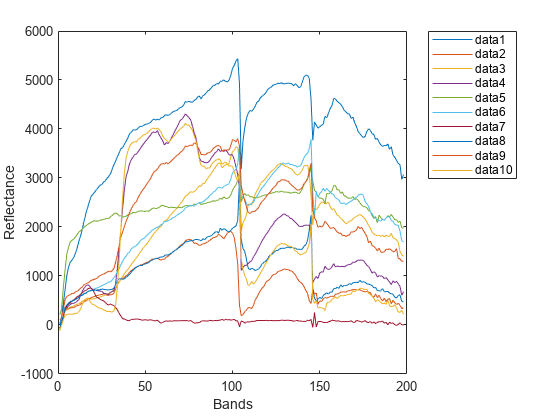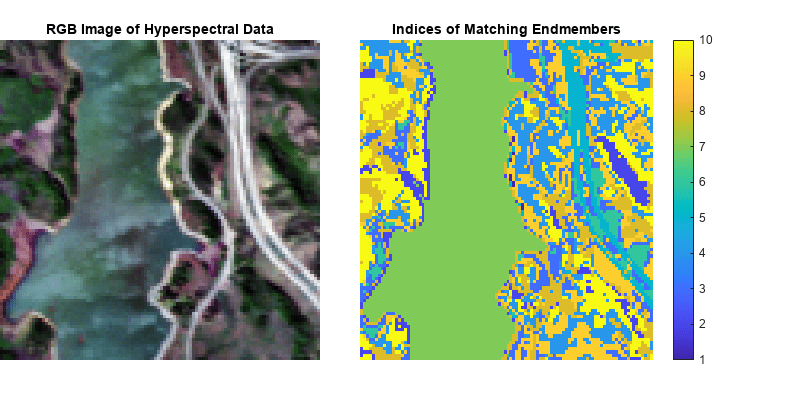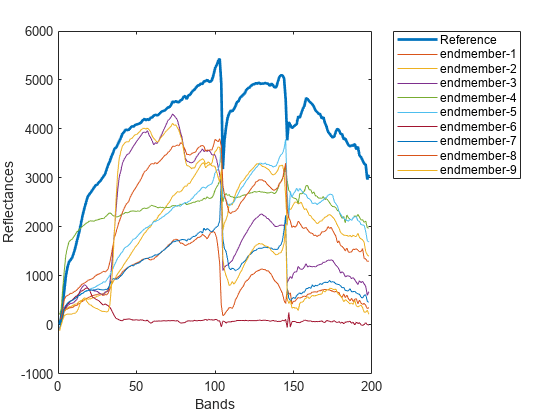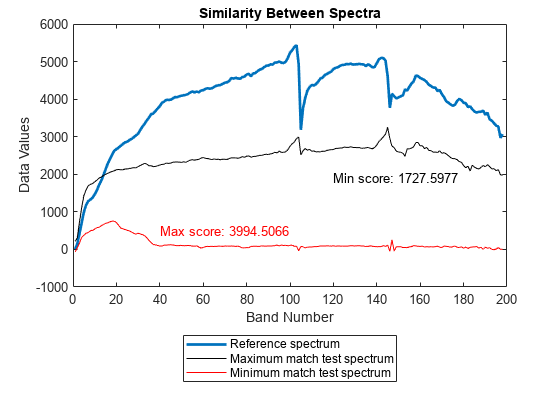ns3
Measure normalized spectral similarity score
Description
score = ns3(inputData,refSpectrum)inputData and the specified reference spectrum
refSpectrum by using the normalized spectral similarity score (NS3)
method. Use this syntax to identify different regions or materials in a hyperspectral data
cube. For information about the NS3 method, see More About.
score = ns3(testSpectrum,refSpectrum)testSpectrum and reference spectrum refSpectrum
by using the NS3 method. Use this syntax to compare the spectral signature of an unknown
material against the reference spectrum or to compute spectral variability between two
spectral signatures.
Note
This function requires the Hyperspectral Imaging Library for Image Processing Toolbox™. You can install the Hyperspectral Imaging Library for Image Processing Toolbox from Add-On Explorer. For more information about installing add-ons, see Get and Manage Add-Ons.
The Hyperspectral Imaging Library for Image Processing Toolbox requires desktop MATLAB®, as MATLAB Online™ and MATLAB Mobile™ do not support the library.
Examples
Input Arguments
Output Arguments
Limitations
This function does not
support parfor loops, as its performance is already
optimized. (since R2023a)
More About
References
[1] Nidamanuri, Rama Rao, and Bernd Zbell. “Normalized Spectral Similarity Score (NS3) as an Efficient Spectral Library Searching Method for Hyperspectral Image Classification.” IEEE Journal of Selected Topics in Applied Earth Observations and Remote Sensing 4, no. 1 (March 2011): 226–40. https://doi.org/10.1109/JSTARS.2010.2086435.
Version History
Introduced in R2020b
See Also
spectralMatch | readEcostressSig | sid | hypercube | jmsam | sidsam | sam



